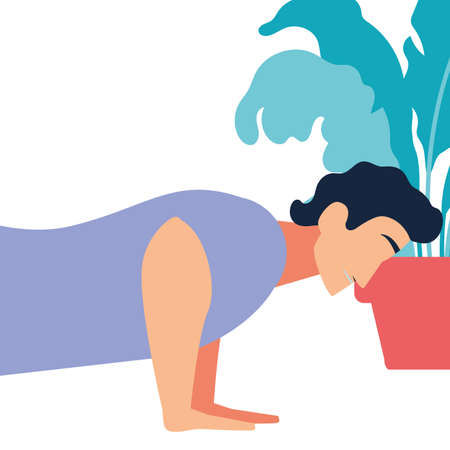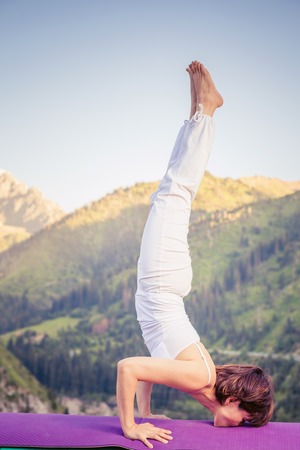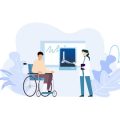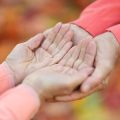Introduction to Brain Injury Rehabilitation in India
Brain injuries present significant health challenges across the world, and India is no exception. Each year, thousands of individuals in India suffer from traumatic brain injuries due to road accidents, falls, or medical conditions such as strokes. The process of rehabilitation after a brain injury is often complex and requires a thoughtful blend of medical expertise, patience, and family support. In the Indian context, rehabilitation is influenced not only by the availability of healthcare resources but also by cultural values, social beliefs, and traditional healing systems. Access to modern rehabilitation facilities can vary greatly between urban and rural areas, making it essential to explore locally relevant solutions. Traditional practices like Yoga and Ayurveda have deep roots in Indian society and are increasingly being integrated into brain injury recovery protocols. These practices offer holistic approaches that align with Indian cultural perspectives and can complement conventional medical treatments. Understanding the unique challenges faced by brain injury survivors in India—and how community support, cultural acceptance, and indigenous therapies play a role—lays the foundation for more inclusive and effective rehabilitation strategies.
2. Traditional Indian Approaches: The Roots of Yoga and Ayurveda
Indias rich cultural heritage is deeply intertwined with the ancient sciences of Yoga and Ayurveda, both of which offer a holistic approach to health and well-being. These traditions, which date back thousands of years, are based on the understanding that the mind, body, and spirit are interconnected, and true healing can only be achieved by addressing all aspects of a persons being. In the context of brain injury rehabilitation, this perspective is particularly significant, as it moves beyond symptomatic treatment to focus on overall restoration and balance.
The Foundations of Yoga in Indian Culture
Yoga, originating from the Sanskrit word “yuj” meaning union, encompasses physical postures (asanas), breathing techniques (pranayama), meditation (dhyana), and ethical disciplines. It has always been more than just a form of exercise; in India, yoga is a way of life that fosters harmony between body and mind. When applied in brain injury rehabilitation, yoga practices are tailored to support neuroplasticity, promote relaxation, and improve concentration—elements crucial for recovery.
The Principles of Ayurveda
Ayurveda, translating to “the science of life,” is one of the world’s oldest holistic healing systems. It emphasizes individualized care based on ones unique constitution (Prakriti) and the balance of bodily energies (Doshas: Vata, Pitta, Kapha). Ayurvedic principles highlight prevention, natural therapies, dietary guidance, herbal medicines, and mindful living. In cases of brain injury, Ayurveda seeks to restore equilibrium using personalized interventions that nurture both physical recovery and emotional resilience.
Holistic Principles at a Glance
| Aspect | Yoga | Ayurveda |
|---|---|---|
| Core Concept | Union of Body & Mind | Balance of Doshas |
| Main Tools | Asanas, Pranayama, Meditation | Diet, Herbs, Therapies |
| Approach to Healing | Physical & Mental Integration | Personalized & Preventive Care |
Historical Relevance to Healing in India
The roots of Yoga and Ayurveda are embedded in Indian scriptures such as the Vedas and Upanishads. Historically, these practices have served not only as spiritual disciplines but also as practical tools for managing illness and supporting recovery from trauma—including neurological conditions. Families across India often turn to these traditional approaches alongside modern medicine for comprehensive care during difficult times like brain injury rehabilitation. Their time-tested wisdom continues to inspire hope and offer gentle guidance on the journey towards healing.

3. Role of Yoga in Enhancing Cognitive and Physical Recovery
Yoga holds a special place in Indian culture, not just as a form of exercise, but as a holistic way to heal the mind and body. In the context of brain injury rehabilitation, yoga is increasingly being recognised for its unique benefits in both cognitive and physical recovery. Across India, various communities have embraced yoga as an accessible and adaptable tool for healing, drawing from ancient practices that have stood the test of time.
Popular Yoga Practices for Brain Injury Recovery
Several specific yoga techniques are commonly used to support patients recovering from brain injuries. Among these, gentle asanas (physical postures) such as Tadasana (Mountain Pose), Vrikshasana (Tree Pose), and Shavasana (Corpse Pose) are preferred because they help improve balance, coordination, and relaxation without putting undue strain on the body. These asanas are often recommended by Indian yoga therapists for their simplicity and effectiveness, making them suitable even for beginners or those with limited mobility.
The Power of Pranayama
Breathing exercises, or pranayama, form a core component of Indian yoga practice, especially in rehabilitation settings. Techniques like Anulom Vilom (alternate nostril breathing) and Bhramari (bee breath) are widely taught across rehabilitation centres in India. These practices are believed to enhance oxygen supply to the brain, reduce stress, and promote calmness—factors that are crucial for cognitive recovery after a brain injury.
Meditation and Mindfulness: Embracing Inner Healing
Meditation is deeply rooted in Indian tradition and is now commonly integrated into brain injury rehabilitation programs. Guided meditation sessions, mindfulness exercises, and chanting (such as using the sound “Om”) help patients regain mental clarity, improve focus, and foster emotional stability. The acceptance of these techniques within Indian communities has made it easier for patients to adopt them as part of their daily routines.
Community acceptance plays a vital role in the success of yoga-based rehabilitation in India. Families often participate alongside patients, fostering a sense of togetherness and mutual support. Many local community centres and NGOs provide group yoga classes tailored to individuals with neurological challenges, ensuring everyone can benefit regardless of their background or abilities. This collective approach not only aids recovery but also strengthens cultural ties by reviving traditional practices in modern healthcare settings.
4. Ayurvedic Therapies and Herbal Support in Rehabilitation
In Indian households, the wisdom of Ayurveda is deeply woven into daily routines, especially when it comes to supporting recovery from brain injuries. This holistic science recommends a variety of herbs, oils, and dietary practices that are not only accessible but also tailored to Indian lifestyles and preferences. These therapies focus on nurturing the nervous system, promoting brain cell regeneration, and gently guiding the body back toward balance.
Commonly Used Ayurvedic Herbs for Neural Healing
| Herb | Traditional Name | Key Benefits in Rehabilitation |
|---|---|---|
| Brahmi | Bacopa monnieri | Improves memory, reduces anxiety, supports cognitive function |
| Ashwagandha | Withania somnifera | Reduces stress hormones, strengthens nerves, promotes overall vitality |
| Shankhpushpi | Convolvulus pluricaulis | Enhances mental clarity, calms the mind, helps with insomnia and agitation |
| Turmeric | Haldi (Curcuma longa) | Reduces inflammation in neural tissues, antioxidant protection for brain cells |
| Mulethi | Licorice root (Glycyrrhiza glabra) | Soothes nerves, supports adrenal health during recovery periods |
The Role of Ayurvedic Oils in Daily Care
The practice of Abhyanga, or oil massage, is a cherished tradition in India that extends into rehabilitation settings. Specific oils like Brahmi oil, Ksheerabala oil, and Ashwagandha oil are massaged onto the scalp and body to calm the nervous system, improve circulation to the brain, and aid restful sleep—an essential factor in healing after injury. Families often incorporate these therapeutic massages into morning or evening routines as a form of loving care and support.
Dietary Recommendations for Brain Health in Indian Homes
Ayurveda places great emphasis on food as medicine. In many Indian kitchens, meals are prepared with ingredients believed to nourish brain tissue and speed up recovery. Some everyday dietary recommendations include:
- Ghee (clarified butter): Considered a sacred fat in Ayurveda, ghee lubricates neural pathways and supports memory functions.
- Nuts & Seeds: Almonds (badam), walnuts (akhrot), and flaxseeds are soaked overnight and consumed for their omega-3 content and ability to promote brain cell repair.
- Sattvic Foods: Light, easily digestible foods such as moong dal khichdi, fresh fruits, steamed vegetables, and rice help maintain digestive health while reducing toxin build-up that can impede recovery.
- Tulsi Tea: Drinking herbal teas like tulsi (holy basil) soothes stress and uplifts mood—both important for patients adjusting to new challenges post-injury.
Cultural Practices for Holistic Well-being
Apart from herbs and foods, Indian families often create supportive environments through daily rituals—chanting mantras for peace of mind, burning calming incense such as sandalwood or camphor at home, and ensuring ample exposure to morning sunlight. These small yet meaningful practices align with Ayurveda’s belief that healing the mind is just as vital as healing the body.
A Gentle Approach Rooted in Tradition
The integration of Ayurvedic therapies into rehabilitation is not just about remedies—it is about fostering hope through familiar routines that nurture both patient and caregiver. By combining these time-tested approaches with modern medical care, many Indian families find a sense of empowerment and comfort on the journey toward neural rejuvenation.
5. Integrating Modern Rehabilitation with Traditional Practices
In India, the approach to brain injury rehabilitation is becoming increasingly holistic, as hospitals and rehabilitation centres are now integrating modern allopathic treatments with time-tested practices from Yoga and Ayurveda. This unique blend is not only rooted in India’s rich cultural heritage but also reflects an evolving understanding of patient care that values both scientific innovation and traditional wisdom.
The Indian Model of Holistic Healing
Many leading medical institutions across India, such as AIIMS Delhi and NIMHANS Bengaluru, have started incorporating certified Yoga therapists and Ayurvedic practitioners within their multidisciplinary teams. Patients recovering from traumatic brain injuries or strokes often receive physiotherapy and occupational therapy alongside guided Yoga sessions tailored to their abilities and needs. In parallel, Ayurvedic consultations are provided to suggest dietary modifications, herbal supplements, and gentle therapies like Shirodhara or Abhyanga massage, aimed at calming the mind and supporting neural healing.
Personalized Patient Care Plans
Rehabilitation in India is highly individualized. Doctors collaborate with patients and families to design recovery plans that may include pranayama (breathing exercises), meditation, or specific yogic postures (asanas) for enhancing neuroplasticity. Simultaneously, Ayurvedic assessments consider each person’s prakriti (constitution) to recommend supportive lifestyle routines. The integration ensures that physical recovery goes hand-in-hand with emotional stability and spiritual well-being—a combination cherished in Indian healthcare culture.
Bridging Science and Tradition for Better Outcomes
This integrative approach has shown promising results: patients report improved mood, reduced stress, better sleep quality, and greater motivation to participate in therapies. Hospitals often host workshops for caregivers on simple home-based Yoga routines or Ayurvedic cooking tips using familiar spices like turmeric and cumin. By blending modern medicine with India’s own healing traditions, rehabilitation centres are creating a warm, supportive environment where hope and recovery flourish together—truly embodying the spirit of “seva” (selfless care) so central to Indian values.
6. Challenges and Opportunities in Widespread Adoption
India’s rich heritage of Yoga and Ayurveda holds immense promise for the rehabilitation of brain injuries, yet their mainstream adoption faces several social, economic, and infrastructural challenges. Understanding these barriers is essential to unlocking the full potential of these traditional healing systems in modern clinical settings.
Social Barriers: Perceptions and Awareness
Despite being rooted in Indian culture, there is a common perception among some communities that Yoga and Ayurveda are supplementary or “alternative” forms of treatment rather than primary rehabilitation methods. This perception can limit their acceptance, especially among urban populations who may favour Western medicine. Furthermore, a lack of awareness about the scientific evidence supporting Yoga and Ayurveda’s effectiveness in brain injury recovery can deter both patients and medical practitioners from integrating these therapies into rehabilitation plans.
Economic Barriers: Accessibility and Affordability
The availability of skilled Yoga therapists and Ayurvedic practitioners in rural and semi-urban areas remains limited. For many families dealing with brain injuries, the cost associated with regular sessions or purchasing Ayurvedic medicines can be prohibitive. Moreover, most health insurance policies in India do not cover traditional practices, making it financially challenging for many to pursue these rehabilitative options consistently.
Infrastructural Barriers: Integration with Mainstream Healthcare
The Indian healthcare system is still evolving in its approach to integrative medicine. Many hospitals lack dedicated infrastructure or trained staff to offer comprehensive Yoga and Ayurveda-based rehabilitation alongside conventional therapies. Additionally, standardized protocols for integrating these practices into mainstream rehabilitation are still being developed, leading to inconsistencies in care quality across different regions.
Emerging Opportunities
Despite these challenges, there is growing recognition at both government and community levels about the benefits of blending traditional wisdom with modern medicine. Initiatives such as AYUSH (Ayurveda, Yoga & Naturopathy, Unani, Siddha, and Homoeopathy) are helping to create frameworks for research, education, and practice integration. Increasing digital penetration has enabled tele-yoga sessions and online consultations with Ayurvedic experts, bridging gaps in accessibility. Moreover, collaborations between hospitals and wellness centres are making holistic rehabilitation programs more widely available.
A Path Forward
The journey toward widespread adoption of Yoga and Ayurveda in brain injury rehabilitation calls for sustained efforts in education, policy-making, and research. By fostering greater public awareness, developing affordable service models, and investing in integrated healthcare infrastructure, India can pave the way for these age-old practices to play a transformative role in supporting recovery journeys—one patient at a time.
7. Voices from the Ground: Experiences and Success Stories
In the heart of India, every family has its own story, especially when it comes to overcoming challenges like brain injuries. Through the centuries-old wisdom of Yoga and Ayurveda, many have found hope and strength during their recovery journey. These experiences are not just medical success stories but also powerful reminders of how traditional practices remain relevant in modern India.
Stories of Courage and Renewal
Take the case of Mr. Sharma from Lucknow, who suffered a severe traumatic brain injury after a road accident. After initial hospital care, his family turned to an Ayurvedic centre in Kerala. With personalised herbal therapies and simple yoga routines focusing on gentle breathing (pranayama) and slow movements (asana), Mr. Sharma gradually regained cognitive abilities and mobility. His wife often shares, “Yoga helped him reconnect with his body, while Ayurveda supported his healing from within.”
Families Finding Hope Together
For many Indian families, recovery is a collective effort. Mrs. Asha’s son, Rohit, struggled with speech and memory after encephalitis. Their local ayurvedic doctor suggested incorporating Brahmi-based oils for head massage and daily meditation sessions together at home. Over time, not only did Rohit’s condition improve, but the whole family felt more connected and peaceful through their shared yoga practice.
Community Support Makes a Difference
Across India, community yoga groups play a big role too. In Bengaluru, support circles led by yoga therapists offer group sessions tailored for patients recovering from neurological injuries. Participants share their progress—small steps like holding a pose or remembering new words—which brings encouragement to others walking a similar path.
A Human Perspective Rooted in Indian Values
These real-life stories highlight how Yoga and Ayurveda are more than therapeutic tools—they foster resilience, togetherness, and faith in natural healing. By blending traditional knowledge with compassion and patience, families across India continue to write their own success stories in brain injury rehabilitation.


